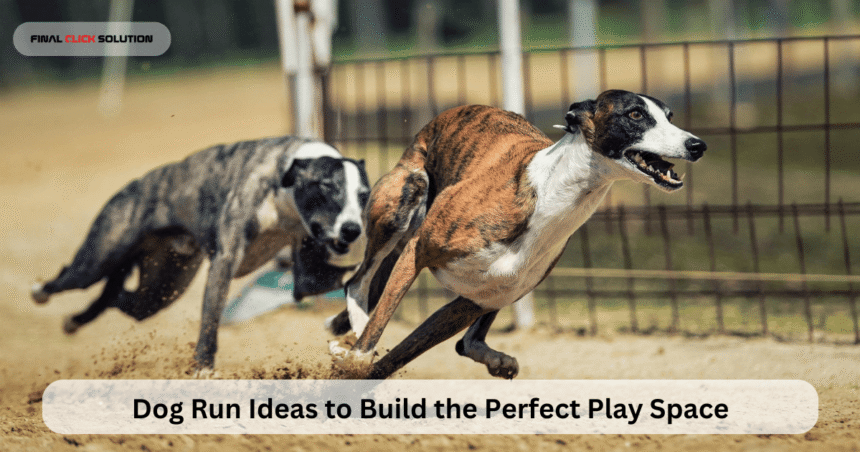If you’re a dog owner looking to enhance your pet’s quality of life, exploring dog run ideas can be a game-changer. A well-designed dog run provides a safe, stimulating environment where your canine companion can exercise, play, and relax without the risks associated with roaming free. Whether you have a spacious backyard or a more compact urban setup, these ideas can transform your outdoor space into a doggy paradise. In this comprehensive guide, we’ll delve into various concepts, from basic setups to advanced features, ensuring your dog stays happy, healthy, and active.
Understanding the Basics of a Dog Run
Before diving into specific designs, it’s essential to grasp what makes a good dog run. Essentially, a dog run is an enclosed area dedicated to your dog’s recreation. It should be secure to prevent escapes, spacious enough for movement, and equipped with elements that cater to your dog’s natural instincts like digging, running, and exploring. When brainstorming ideas for a dog run, consider your dog’s breed, size, energy level, and any specific needs. For instance, high-energy breeds like Border Collies might require longer runs for sprinting, while smaller dogs like Chihuahuas could thrive in cozier spaces with agility obstacles.
Safety is paramount. Ensure the enclosure is escape-proof with tall fences and buried foundations to deter diggers. Materials should be durable and non-toxic—avoid treated woods that could splinter or chemicals that might harm your pet. Additionally, incorporate shade, water sources, and easy-to-clean surfaces to maintain hygiene. A basic dog run might measure 10 feet by 20 feet, but scaling up based on your available space is ideal.
Backyard Dog Run Ideas for Everyday Fun
One of the most popular ways to implement dog run ideas is in your backyard. Backyard dog run ideas often focus on integrating the run seamlessly with your existing landscape, making it both functional and aesthetically pleasing. For example, you could create a linear run along the side of your house, using natural barriers like hedges or walls to define boundaries. Add turf or artificial grass for a low-maintenance ground cover that’s gentle on paws.
To make it more engaging, install interactive elements such as tunnels, ramps, or even a small agility course. PVC pipes can be fashioned into hurdles or weave poles for training sessions. If your yard has uneven terrain, incorporate hills or mounds for added physical challenge. Lighting is another key feature—solar-powered LED lights along the perimeter ensure safe evening playtime. Remember, the goal is to mimic a natural environment while providing outlets for energy expenditure, reducing behaviors like excessive barking or destructive chewing indoors.
Dog Run Fence Ideas to Ensure Security and Style
Fencing is the backbone of any dog run, and exploring dog run fence ideas can elevate both safety and visual appeal. Traditional chain-link fences are affordable and effective, but for a more upscale look, consider wooden privacy fences stained in natural tones to blend with your yard. Vinyl-coated chain link offers durability with a softer touch, available in colors like green or black to camouflage into greenery.
For escape artists, opt for fences at least 6 feet tall with anti-climb toppers or inward-leaning extensions. Dig-proof bases, like concrete footings or buried wire mesh, prevent tunneling. If aesthetics matter, wrought iron with decorative panels can add elegance, though ensure gaps are narrow to avoid small dogs squeezing through. Electric fences are controversial and often not recommended due to potential stress on the dog, so stick to physical barriers. Combining fences with gates that have self-closing mechanisms enhances convenience for owners.
Dog Run Ideas Landscaping for a Natural Oasis
Landscaping plays a crucial role in making your dog run feel like an extension of nature. Dog run ideas landscaping emphasize pet-friendly plants, terrain variations, and sensory stimulation. Start with dog-safe greenery—avoid toxic plants like lilies or azaleas, and instead plant hardy options such as rosemary, thyme, or pet grass that dogs can nibble on safely.
Create zones within the run: a digging pit filled with sand or mulch for burrowers, a shaded lounge area with elevated platforms or hammocks, and a water feature like a shallow splash pool for cooling off on hot days. Use pea gravel or rubber mulch for ground cover to promote drainage and ease cleaning. Incorporate boulders or logs for climbing and hiding spots, fostering mental engagement. For eco-conscious owners, native plants can attract butterflies and birds, adding visual interest without extra maintenance. Proper landscaping not only beautifies the space but also encourages natural behaviors, keeping your dog mentally stimulated.
Back Yard Dog Run Ideas for Small Spaces
Even if your outdoor area is limited, back yard dog run ideas can maximize every square foot. In compact yards, vertical space is your ally—think multi-level platforms or wall-mounted agility equipment. A narrow corridor run along a fence line, perhaps 4 feet wide by 30 feet long, can suffice for zooming back and forth.
Portable or modular runs made from panels allow flexibility; they can be reconfigured or stored when not in use. Integrate storage for toys and waste bags into the design, like built-in benches with compartments. For apartment dwellers with balconies, elevated runs with mesh flooring ensure safety while providing fresh air. These setups prove that size doesn’t limit creativity—focus on quality features like puzzle feeders or scent trails to keep things exciting.
Incorporating Health and Wellness into Your Dog Run
A dog run isn’t just about play; it’s also a space to monitor and promote your pet’s health. Regular use of the run can help maintain physical fitness, but it’s wise to watch for signs of illness that might affect their enjoyment. For example, if your dog seems lethargic during playtime, you might wonder, how do i know if my dog has a cold? Common indicators include sneezing, coughing, nasal discharge, or reduced appetite. If symptoms persist, consult a vet, as colds can sometimes signal more serious issues like kennel cough.
To support wellness, add features like a first-aid station nearby with essentials like bandages and tick removers. Ensure the run has good ventilation to prevent respiratory issues, and provide fresh water via automatic dispensers. Rotating toys prevents boredom, which can lead to stress-related health problems. By blending fun with health monitoring, your dog run becomes a holistic haven.
Advanced Features and Customizations
For those ready to invest more, advanced dog run ideas include smart tech integrations. Motion-activated cameras let you monitor your dog remotely via apps, ensuring peace of mind. Automatic treat dispensers or ball launchers provide entertainment when you’re away. Climate control, like misting systems for summer or heated pads for winter, extends usability year-round.
Custom themes can add whimsy— a “jungle gym” with rope bridges for adventurous pups or a “zen garden” with calming elements like wind chimes. For multi-dog households, divide the run into sections to prevent conflicts, using gates for supervised interactions. Sustainability is trending; use recycled materials for fences or solar panels to power lights, reducing your environmental footprint.
Maintenance and Long-Term Considerations
No dog run is complete without a maintenance plan. Regular cleaning prevents odors and parasites—use enzymatic cleaners for urine spots and rake gravel weekly. Inspect fences for wear, repairing any damage promptly. Seasonal adjustments, like adding tarps for rain protection or removing snow, keep the space functional.
Budgeting is key; a basic run might cost $500-$1,000, while elaborate ones exceed $5,000. DIY options save money but require research to ensure safety. Professional installation guarantees compliance with local zoning laws, which might restrict fence heights or require permits.
Real-Life Inspirations and Case Studies
Drawing from real examples, many owners have shared success stories online. One urban dweller transformed a tiny patio into a vertical run with stacked crates and ramps, allowing their terrier to climb and explore. A suburban family built a landscaped run with a pond feature, where their Labradors splash happily. These anecdotes highlight adaptability—tailor ideas to your lifestyle.
Community resources like dog parks or online forums offer additional inspiration. Joining groups can connect you with experts for personalized advice, ensuring your run evolves with your dog’s needs.
Conclusion: Bringing Your Dog Run to Life
In summary, dog run ideas abound, from simple enclosures to elaborate playgrounds. By incorporating elements like secure fencing, thoughtful landscaping, and health-focused features, you’ll create a space that enriches your dog’s life. Start small, observe your pet’s preferences, and expand as needed. A well-planned dog run not only boosts physical health but also strengthens your bond, turning everyday moments into joyful adventures. Whether it’s a backyard haven or a compact backyard setup, the effort pays off in wagging tails and happy barks.








